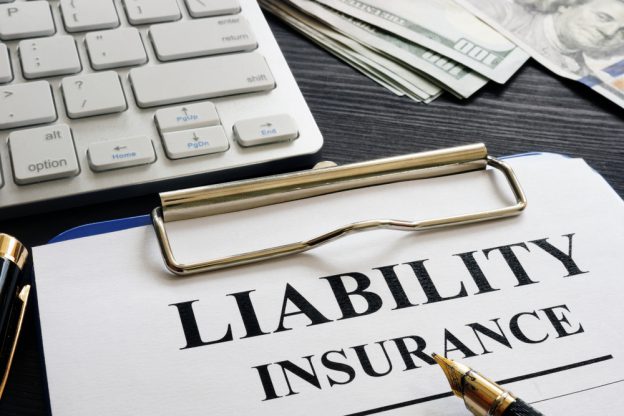When it comes to getting your CSLB contractor license so you can start doing legal construction work in the state of California, one of the biggest areas of confusion is around the concept of “qualifying individuals”.
Qualifying individuals, or QIs, are an essential part of the contractor licensing process – but the actual description of these critical stakeholders leaves a lot to be desired, especially for laymen like you and me.
In this article, we’ll cover the qualifying individual for the CSLB contractor license. What is a qualifying individual? How does it affect the contractor’s license process? Do you need a qualifying individual for your solar panel contractor’s license?
Let’s find out.
What is a “Qualifying Individual”?
A qualifying individual, or “qualifier,” is a person listed in the California Contractors State License Board’s (CSLB) records who meets the experience and examination requirements set by the CSLB and is responsible for the compliance of the contracting business with state regulations.
These are your licensed contractors, who have been through the CSLB wringer and come out the other side, with a polished contractor license and the experience and education to boot! However – they do not need to be licensed contractors themselves!
It’s important to note that every license with the CSLB requires a qualifier. A qualifier takes many forms; they may be a Sole Owner, Qualifying Partner, Responsible Managing Employee (RME), Responsible Managing Officer (RMO), Responsible Managing Manager, or Responsible Managing Member.
That means that even you, as a one-man construction team, may be a qualifying individual! Likewise, in a giant construction firm, there may be several qualifying individuals who oversee the rest of the construction team and have the qualifications and expertise to do construction work.
In many contexts, a qualifying individual is basically a boss. They’re your foreman or company’s principal contractor – a CSLB license holder who is qualified to oversee construction work in accordance with their license. That means that even “unlicensed” contractors can do work under the supervision of this contractor.
What Does a Qualifying Individual or Qualifier Do?
The qualifier is responsible for exercising direct supervision and control of the employer’s or principal’s construction operations to ensure full compliance with the rules and regulations of the CSLB and local ordinances.
In plain English, a qualifying individual is where the buck stops with regard to construction projects. A qualifying individual oversees the entire construction process in line with their license, even if they don’t do the work themselves.
For example, maybe a C-10 Electrical Contractor has an electrician’s apprentice working under them. In that scenario, the electrician is a qualifying individual for the C-10 license – and under that agreement, the electrician’s apprentice may perform electrical work, legally.
However, the qualifying individual – the contractor license holder – is ultimately responsible for the end product of the work, and is personally liable for any issues caused by the work of the people they are responsible for.
To use our electrical example again, if an apprentice causes electrical issues for the client, the C-10 electrician is ultimately responsible – not the apprentice!
What’s the Difference Between a Qualifying Individual and a CSLB License Holder?
A CSLB license holder is the entity or individual that holds the contractor’s license, while the qualifying individual is the person responsible for ensuring the license holder’s compliance with state regulations.
Very often, license holders and qualifying individuals are one and the same. Your contracting company’s business structure will largely dictate your QI situation. Sole proprietors are often both the license holders and qualifying individuals for their own licenses. However, as business structures change and become more complex, who is the qualifying individual and who is allowed to work under their license becomes more challenging.
In many cases, qualifying individuals may be the organization’s head officer, who holds a contractor’s license of their own. Underneath their license, their employees may be able to perform the work outlined in their license classification. In this arrangement, the license holder/qualifying individual is responsible for the work of anyone working under their license!
Who Can Be a Qualifier or Qualifying Individual?
Eligibility for a qualifying individual varies based on the business structure and the level of construction expertise within the company.
A qualifying individual can be a Sole Owner, Qualifying Partner, Responsible Managing Employee (RME), Responsible Managing Officer (RMO), Responsible Managing Manager, or Responsible Managing Member. All of these have different levels of responsibility and liability, but ultimately it all means the same thing – these people hold the license and allow others to work under them under that same license.
Really, almost any management-level contractor can be a qualifying individual, so long as they meet the requirements to be a qualifying individual.
Types of Qualifying Individuals
There’s 7 types of qualifying individuals in the state. All of these have the same power and ability to oversee construction in their various specializations.
- Responsible Managing Employee (RME): An employee of the contracting firm who is responsible for supervising construction activities and ensuring compliance with regulations. RMEs must be bona fide employees, working at least 32 hours per week or 80% of the total business operating hours per week, whichever is less.
- It’s critical to note that RMEs cannot be a qualifier on any other active CSLB license. This is the only license they can be responsible for.
- Responsible Managing Officer (RMO): An officer of a corporation or a member/manager of an LLC who is responsible for the construction activities of the business. These are often retired or promoted construction professionals like general contractors.
- Qualifying Partner: In a partnership, one of the general partners is designated as the qualifier for the license. They are responsible for the supervision and control of the construction operations of the partnership, while the other partner is allowed to do work under that license.
- Responsible Managing Manager/Member: In an LLC, a manager is designated as the qualifier for the license. Similar to an RMO, RMMs are responsible for overseeing the construction operations and ensuring compliance with regulations.
- Sole Owner: An individual who owns the contracting business and is responsible for all aspects of the construction operations, including compliance with regulations and standards. This is most construction professionals in the state.
Bond of Qualifying Individual (BQI)
A bond of qualifying individual or BQI is a type of surety bond required for qualifying individuals who are not owners of the business.
This bond is similar to a contractor’s bond, protecting the end customer in the event of a contractor breaching a contract. However, this bond is actually held in addition to a contractor’s bond when acquired via a qualifier.
Like the contractor’s bond, the CSLB requires any license qualified by an RME to hold a QBI bond in the amount of $25,000. This is only for RME-qualified licenses.
If the bond is qualified by an RMO, however, the QBI might not be required. In instances where the RMO does not own at least 10% of the voting stock of the corporation. If they own more than 10%, the RMO must complete a Bond of Qualifying Individual Exemption Certification.
Here’s the additional requirements for the Bond of Qualifying Individual as per the CSLB.
- The bond must be written by a surety company licensed through the California Department of Insurance.
- The bond must be for $25,000
- The business name, license number, and qualifier’s name on the bond must correspond exactly with the information on the CSLB’s records.
- The bond must have the signature of the attorney-in-fact for the surety company.
- The bond must be written on a form approved by the Attorney General’s Office.
- The bond must be received at the CSLB’s Headquarters Office within 90 days of the effective date of the bond.
Do You Need a Contractor’s License to Do Construction Work If Your Boss Is A Qualifier?
In California, anyone who wants to perform work on a project valued at $500 or more for combined labor and materials costs must hold a current, valid license from the CSLB.
However, this is where the beauty of qualifying individuals comes in. If you are an employee working under the supervision of a licensed contractor or qualifying individual, you do not need your own contractor’s license. The qualifying individual, typically your boss, is responsible for ensuring that the work complies with state regulations and standards, and thereby takes responsibility for your work.
Can Employees Without Contractor’s Licenses Do Construction Work Under a Company-Wide Contracting License?
Yes, employees without contractor’s licenses can perform construction work under a company-wide contracting license, as long as the work is supervised by a licensed contractor or a qualifying individual.
As we’ve stated numerous times in this article, the licensed contractor or qualifying individual is ultimately responsible for the quality of work and compliance with state regulations.
Employees do not need individual licenses to work on projects as long as they are working under the umbrella of the company’s license – but they may need additional licenses if the construction work falls outside of the scope of the QI’s license.
Who Is Liable For Damages Under A Qualifying Individual?
If there’s an issue with an employee’s work under a qualifying individual’s license, the qualifying individual (and potentially the licensed contractor or company) is held liable for damages or non-compliance in 99% of cases. This is how the QI system is designed.
The qualifier is responsible for exercising direct supervision and control of the construction operations to ensure compliance with regulations. In case of any disciplinary actions due to non-compliance or poor workmanship, both the license and the qualifier may face consequences, but again, usually, it is the license holder or QI who is responsible for damages.
Do Qualifying Individuals Need A Valid CSLB License?
Surprisingly – no! You do not need to have a contractor’s license to be a qualifying individual!
The only requirement to be a qualifying individual is that you must meet the experience and examination requirements. A qualifying individual does not actually need to have a CSLB license, strangely enough.
Can Someone Else Be a Qualifying Individual for Another Person’s Contractor’s License?
Yes, someone else can be a qualifying individual for another person’s contractor’s license, provided they meet the necessary requirements.
That’s the entire point of a qualifying individual – it allows people without contractor’s licenses to “borrow” a licensed contractor’s license to perform construction work.
Do I Need to Be a Qualifying Individual to Get a Contractor’s License?
Yes, every CSLB license requires a qualifying individual who has demonstrated knowledge and experience. A qualifying individual can be yourself – so no worries there!
How to Find a Qualifier/RME/RMO?
Finding a qualified RME or RMO involves networking, using recruitment agencies, and exploring online platforms like LinkedIn and industry-specific job boards.
Consulting firms that specialize in providing RME or RMO services for contractors who need a qualifier can also be a resource but are harder to find.
The best way to find a qualifier is your local network – surely you know some licensed contractors in your area that would allow you to do construction work for them! Reach out and see if they’ll help you out!









